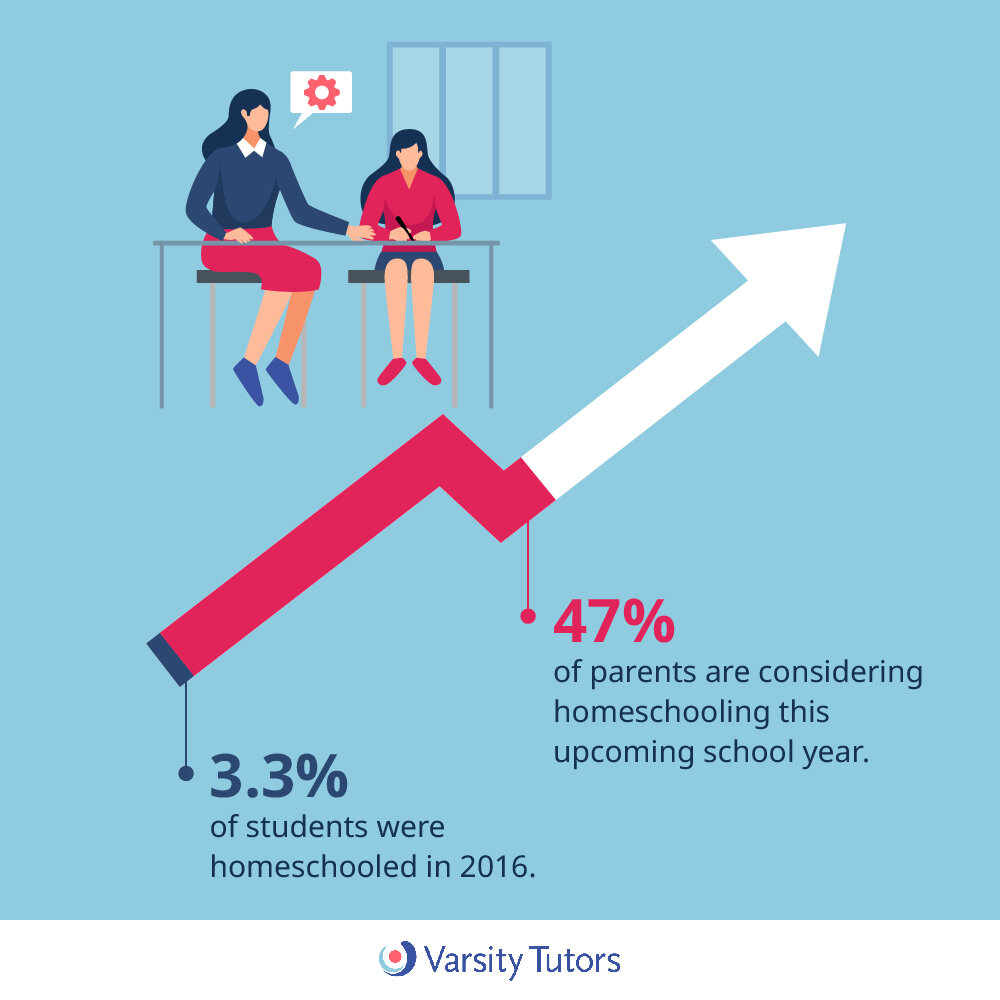SURVEY: How Parents Are Thinking About the ‘20-‘21 School Year
In 2016, 3.3% of students were homeschooled in the United States. That number remained relatively consistent from 2007 to 2019, with roughly 2.5 million children engaged in a homeschool curriculum in the spring of 2019.
Until the coronavirus pandemic forced virtually every American school district to transition to online, at-home learning, families homeschooled for a variety of reasons, including:
Concerns about the in-school environment
Interest in providing moral or religious education
Concerns about the quality of in-school academic instruction.
But as a recent independent survey conducted by Halsted Strategy Group and Varsity Tutors found, COVID-19 may soon transform the face of homeschooling. All of the 1,021 parents surveyed had at least one child in a K-12 grade, the education bracket most critically affected by coronavirus’ impact on schools.
While many states are working to reopen school buildings for the ‘20-‘21 academic year, parents are doubtful about their actual ability to do so. 43% of parents don’t believe their children will attend in-person classes this fall. And of those individuals surveyed, 48% may not send their children to in-person classes even if schools are open.
Even more surprising? A whopping 47% of parents are considering homeschooling this school year. With some 56 million students in the U.S. in total, this potential trend toward homeschooling underscores one key fact: millions of parents who are new to at-home education will be looking to balance their family’s safety with the demands of their work and the academic needs of their children.
Given that 61% of parents worry about their children falling behind due to COVID-19, Varsity Tutors’ Chief Academic Officer, Brian Galvin, suggests trying the following this school year:
Plan to include supplemental education in your ‘20-‘21 academic calendar. Whether this means parent-led activities at home, online group classes, or private tutoring, the mainstream school system is likely to have substantial gaps this year as it deals with shifting regulations, increased demands on teachers, challenges with e-learning, and other inevitable issues. School districts will be forced to scramble at times this fall—prepared parents will be those who are proactive in planning supplemental instruction so that they’re not stuck scrambling too.
Network and outsource your way to engaging, interactive lessons. Creative, hands-on lessons take days to plan and years of trial and error to perfect. This year, even the most innovative and passionate teachers will have to resort to some “busy work” as they adapt to the realities of new scheduling models and, in some instances, try to retrofit their favorite in-person lesson to Zoom. But learners will still need hands-on stimulation and interactivity. Necessarily, some of that engagement will have to come from outside the school system. Parents who network (i.e. every parent takes a turn to teach an interactive lesson once a week) or outsource (i.e. find supplemental education programs that do the work for you) will stand the best chance of keeping kids curious, active, and motivated to learn—whether you fully homeschool or not.
Pick your battles. The 61% of parents who worry about their students falling behind are justified in that concern—with nearly every school and teacher forced to teach in a new way, something will be lost in translation. But not all concepts and subjects are created equal, and you can ensure that you supplement your child’s education where it matters most. Reading and math skills are paramount, for instance. If you plan to homeschool, but don’t feel confident in such key areas, seek outside resources (like those described above) for support.
One way to incorporate supplemental education into your child’s routine or to outsource your way to engaging, interactive lessons is through Varsity Tutors’ School@Home program. School@Home is designed for parents who want the safety and convenience of homeschooling without the need to plan and deliver lessons themselves. There are options to fully replace traditional schooling or to simply augment it to ensure that students overcome the COVID slide during another turbulent semester. School@Home matches learners with expert instructors for small group and 1:1 lessons that complement their ability level and learning style. To learn more, sign up for a Virtual Open House.


